Google Chromecast Review - An Awesome $35 HDMI Dongle
by Brian Klug on July 29, 2013 9:45 PM EST- Posted in
- Smartphones
- Media Player
- Android
- Mobile
- HDMI
- Chrome
- Tablets
- Chromecast
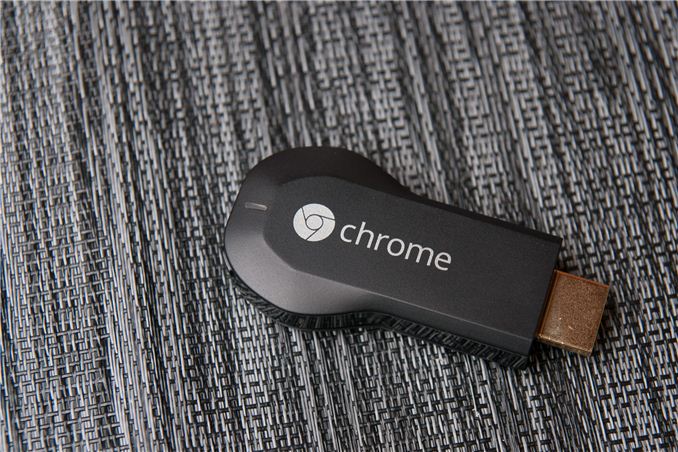
So I have a confession to make – I didn’t hate the Nexus Q. While I didn’t necessarily love it and use it daily like a small minority of my peers did, I also didn’t immediately declare the product an unmitigated disaster like the vast majority of people. The fate of that product was so quickly decided that I hadn’t even begun writing my review when the whole thing was terminated. When I spoke with Googlers about Nexus Q, what was obvious to me was that the Q had begun as an audio-only product that later on had HDMI added, and that tiny bit of context made all the difference in understanding the choices behind it. I left the Nexus Q plugged into my AV Receiver up until the most recent set of Google Play apps killed functionality entirely.
Ultimately the price of the Nexus Q was its undoing ($299), not necessarily its functionality or even its somewhat awkward spherical form factor. The concept was relatively sound – a network-attached appliance that played back movies and music from Google’s servers directly, rather than streaming them from device to device on the same network. The Q ran Android 4.x atop an OMAP4460, literally the same platform as the then-flagship Galaxy Nexus, just sans cellular connectivity, which made it a logical choice.
The Nexus Q was killed off before other services could be added, but at a high level the Q’s functionality as a playback device rather than streaming endpoint carried onto its successor, the Chromecast.
The Chromecast is obviously everything the Q should’ve been. It’s a simple, small, $35 HDMI dongle, powered by USB, that’s designed to discreetly plug into the back of a TV. There’s been much talk about the power requirement of the Chromecast, USB is indeed required for operation, but just about every modern TV has USB ports on the side for attaching mass storage or powering accessories like this. In fact, the Chromecast’s form factor is already a popular one for Android-powered HDMI dongles and Miracast sinks, as well as a variety of other small appliances. I’ve confirmed with Google that MHL-HDMI is not in fact supported by the Chromecast, meaning it can’t be powered by a TV that includes the spec (which can deliver up to 500 mA at 5 V), straight HDMI can only supply 50 mA at 5V. I’ve yet to encounter a TV with MHL-HDMI myself, including on the 55-inch LCD TV I purchased just 3 months ago.
Inside the box for the Chromecast is the device itself, a relatively long microUSB cable, USB power supply, and HDMI extender. Funnily enough the USB power supply appears to be the exact same as the previous generation Motorola USB charger (5V, 850 mA), just with a different exterior – is this the first Motorola product out of Google proper?
The HDMI extender cable helps get the Chromecast behind a TV if you need to turn it 90 degrees or have an inset port with inadequate clearance like I do on my front-facing HDMI accessory port.
There’s not much to talk about regarding aesthetics of the Chromecast itself, it’s a dongle with a rounded bulge at one end, and HDMI port at the other. There’s a reset button on the side, microUSB port for power, and a status LED on top. On the bottom are regulatory markings. My only complaint about the Chromecast’s design is this status LED, which inexplicably is bright solid white whenever the device is on, making it distracting in a dark living room or bedroom. Nothing electrical tape can’t solve, but an inexplicably poor choice for a media center playback device given that bright LEDs are a known no-no.
The hardware is what it needs to be – small, simple, and conducive to the low price point. The Nexus Q was a solid bowling ball in comparison, primarily thanks to the analog audio amplifier and hardware it really didn’t need. By keeping unnecessary I/O to a minimum the Chromecast ends up being a nice and small streaming appliance.


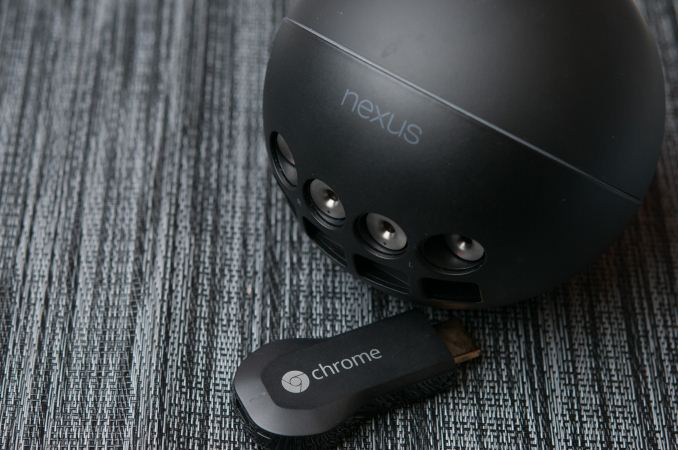
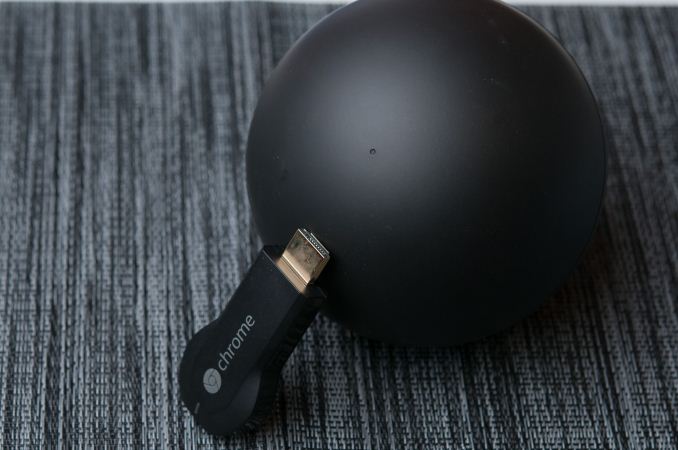

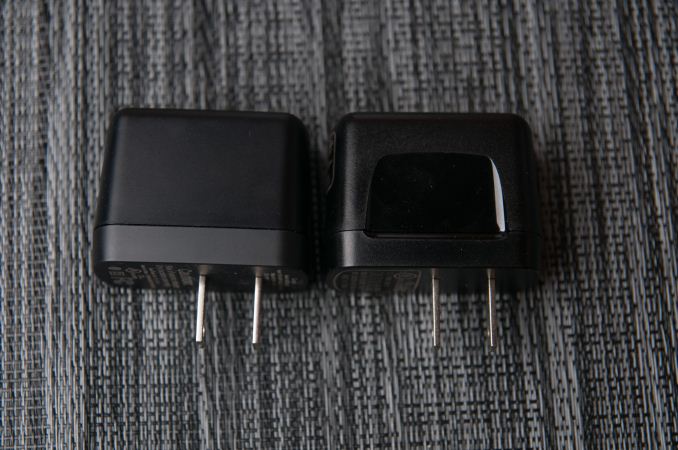






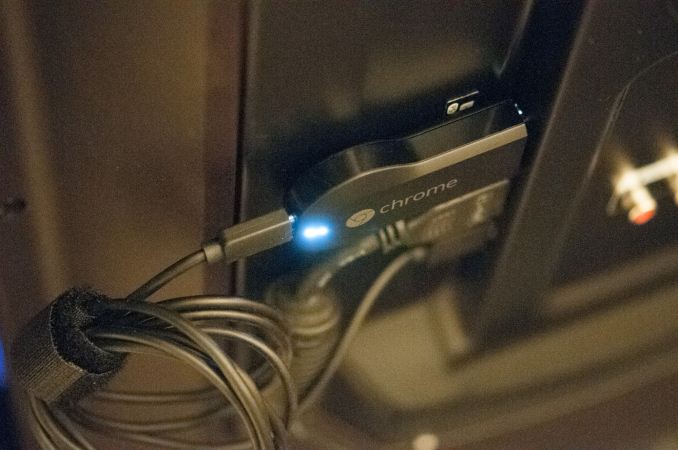








105 Comments
View All Comments
Marthisdil - Tuesday, July 30, 2013 - link
Only reason I was going to buy a Chromecast is because after accounting for 3 free months of Netflix, throwing away $11 on a gadget I wouldn't use much was OK with me.Since they got rid of the 3 free months, there's no reason for me to blow $35 on something I won't use much. Especially since my XBMC pc hooked up to my receiver and TV gives me a lot more functionality - at no additional cost to me - that does all the same, and more, than Chromecast.
Dentons - Tuesday, July 30, 2013 - link
Clearly they don't need to offer 3 free months of Netflix any longer. There is tremendous, even say overwhelming demand. With the Netflix offer, it was a steal. Right now, Chromecast is backordered for a month at most sites, and it's still a very good value for money.Many of us have products that do some of the things Chromecast does, but Chromecast does some things with an ease not found in many far more expensive solutions.
I too have an existing media machine, one that is far more expensive than Chromecast. I still like the Chromecast. It's easy, it's wireless, it's cheap, it just works.
Even if you have an existing media machine, don't knock Chromecast until you've tried it. And that's now, before it even has wide support. A device with this much demand and an open SDK is destined for greatness.
BugblatterIII - Tuesday, July 30, 2013 - link
Miracast works fine for me with my S3 and my gf's Note II. One gotcha is it doesn't like rooted devices; you have to hide root for it to work. Also if the receiver's too close to the TV (well my plasma at least) it doesn't connect; bringing it a foot in front of the TV gets around that. This is with the Netgear PTV3000.darwinosx - Tuesday, July 30, 2013 - link
How is this device "awesome"? It's mediocre in every way. It's only value is cost and the low end Roku is close in cost and walks all over it.matt30 - Wednesday, July 31, 2013 - link
You must own a Roku. Derp.JoeJoe509 - Tuesday, July 30, 2013 - link
Hmmmm dang. Kinda disappointed with the lack of 5Ghz Wifi especially with most reviews claiming that you need a strong signal. I know 5Ghz doesn't reach very far, but it's usually still faster even with a weaker signal.Tuvok86 - Tuesday, July 30, 2013 - link
Great!! Finally I can experience Youtube buffering on my living room TV as well!!Ananke - Tuesday, July 30, 2013 - link
Interesting...another worthless device on the market, at least it is cheap this time around. I thought, and I thought, and I thought...yep, the best might be to use it as wireless mp3 transmitter from your phone to your receiver, unless your receiver doesn't come with that functionality already, of course. Along with the disappointing Nexus 7 concept /anybody let me know how to use Nexus on a 14 hour flight as a video player for the kids, if it doesn't come with microSD AGAIN???/It is so sad that the contemporary software and electronics just plain sucks, from a user perspective. And why the kids are so excited about some castrated stuff like this, I still cannot comprehend :).
DesktopMan - Tuesday, July 30, 2013 - link
Why would Google default to VP8 on YouTube? All videos are available as h264 which has generally been proven as superior. Yes VP8 their codec but that's not a good reason.Also, Chrome tab casting really should be using h264 since pretty much every device can encode it in hardware (GPU or dedicated) these days.
martinofyre - Wednesday, July 31, 2013 - link
Yeah, dont get it either, iMediaShare, does most of this?OUYA, missed the point, poor execution, now this. Too complicated, most people want it to be idiot proof like most apple stuff, too much pushing and pulling, people will give up before finishing reading about it.
Its simple, display phone or tablet on tv, no extra hardware. You shouldn't need anything but your phone or tablet.
This is not the death of the smart tv.
IMO